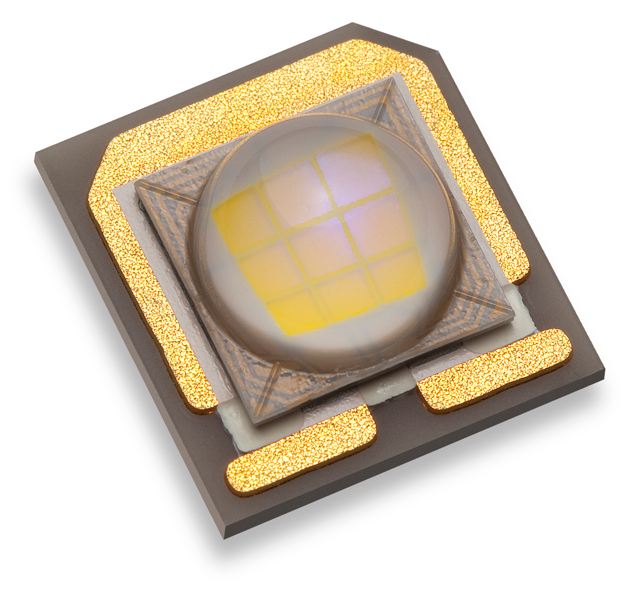Rebecca Matulka, Former Digital Communications Specialist, Office of Public Affairs at DOE shares the top eight properties of LEDs in this blog post.
 |
|
Using funding from the Energy Department, Philips Lumileds developed the LUXEON S1000 -- a commercial LED product used in outdoor street and parking lot lighting. While small, this chip is the heart of the light and as of June 2012 was brighter than a 60-watt light bulb.(Photo courtesy of Philips Lumileds) |
Want to know more about the different lighting options available? Check out our Energy Saver lighting topic page to learn about lighting choices that will save you money, when to turn off your lights and more.
This article is part of the Energy.gov series highlighting the “Top Things You Didn’t Know About…” Be sure to check back for more entries soon.
8. A light-emitting diode, or LED, is a type of solid-state lighting that uses a semiconductor to convert electricity into light. Today’s LED bulbs can be six-seven times more energy efficient than conventional incandescent lights and cut energy use by more than 80 percent.
7. Good-quality LED bulbs can have a useful life of 25,000 hours or more -- meaning they can last more than 25 times longer than traditional light bulbs. That is a life of more than three years if run 24 hours a day, seven days a week.
6. Unlike incandescent bulbs -- which release 90 percent of their energy as heat -- LEDs use energy far more efficiently with little wasted heat.
5. From traffic lights and vehicle brake lights to TVs and display cases, LEDs are used in a wide range of applications because of their unique characteristics, which include compact size, ease of maintenance, resistance to breakage, and the ability to focus the light in a single direction instead of having it go every which way.
4. LEDs contain no mercury, and a recent Energy Department study determined that LEDs have a much smaller environmental impact than incandescent bulbs. They also have an edge over compact fluorescent lights (CFLs) that’s expected to grow over the next few years as LED technology continues its steady improvement.
3. Since the Energy Department started funding solid-state lighting R&D in 2000, these projects have received 58 patents. Some of the most successful projects include developing new ways to use materials, extract more light, and solve the underlying technical challenges. Most recently, the Energy Department announced five new projects that will focus on cutting costs by improving manufacturing equipment and processes.
2. The first visible-spectrum LED was invented by Nick Holonyak, Jr., while working for GE in 1962. Since then, the technology has rapidly advanced and costs have dropped tremendously, making LEDs a viable lighting solution. Between 2011 and 2012, global sales of LED replacement bulbs increased by 22 percent while the cost of a 60-watt equivalent LED bulb fell by nearly 40 percent. By 2030, it's estimated that LEDs will account for 75 percent of all lighting sales.
1. In 2012, about 49 million LEDs were installed in the U.S. -- saving about $675 million in annual energy costs. Switching entirely to LED lights over the next two decades could save the U.S. $250 billion in energy costs, reduce electricity consumption for lighting by nearly 50 percent and avoid 1,800 million metric tons of carbon emissions.





 CN
TW
EN
CN
TW
EN






